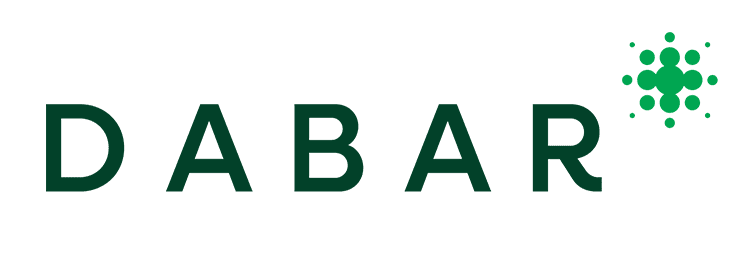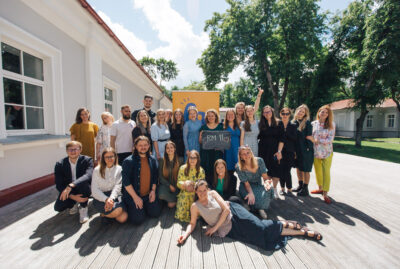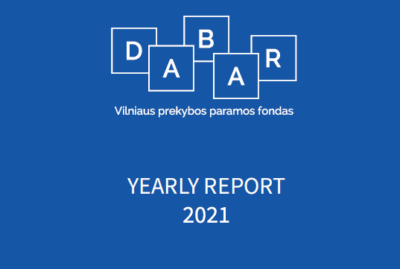
The switch to remote teaching and learning forced by the pandemic further highlighted the importance of IT literacy and showed the value of the involvement of the school community and each member in the educational process and the school’s life.
Kaunas Veršvų Gymnasium provides an excellent example of how to adopt educational innovations faster. All the efforts made before the pandemic to increase the technological literacy of the gymnasium’s community facilitated adjustment to the new circumstances. However, achieving that each student at school can receive the attention they need to grow and improve as persons requires more than acquiring the newest technological solutions. It is equally important to nurture technological openness and receptiveness in school communities. Kaunas’ Veršvų Gymnasium’s principal Žilvinas Damijonaitis and deputy principal for education Renata Lincevičienė are fully convinced of this; despite the recent challenges, they are happy about the changes that have been implemented at school over the past few years.
The goal of increasing openness to technologies
Veršvų Gymnasium is keenly interested in the use of technologies in education. In terms of equipment, it is one the best provisioned schools in Lithuania.
“We have the latest computers and smart devices; we have a 3D teaching resources classroom, a 3D printer, smart boards, smart floors and even robots! Yet, for a long time we were facing the problem that the teachers were not ready to make full use of all the opportunities created by technologies. We therefore sought to change that situation,” says R. Lincevičienė.
As the sudden onset of the pandemic revealed, the focus on this area was not for nothing. Remote teaching required that educational institutions adopt technologies and adjust teaching methods for work in virtual space within a very short period of time. In this regard, having launched a change project together with “Renkuosi mokyti!” [“I Choose Teaching!”] program a couple of years ago, Veršvų gymnasium had an advantage.
“One of the main goals of our change project was to increase the use of the latest technologies in education. To achieve this goal, we started various initiatives. We began organizing monthly meetings during which teachers exchanged knowledge and best practices in the use of technologies. We also invited external experts who conducted seminars for teachers on the potential of IT and communication. Meanwhile, parents took the initiative to organize IT training for students. IT literacy and harnessing its potential became one of the priorities of our gymnasium,” tells R. Lincevičienė.
Interest in technologies paid off during the pandemic
The principal of Veršvų Gymnasium, Žilvinas Damijonaitis, says that the activities of the change project had to be adjusted when the educational process started being organized remotely due to the pandemic. Nevertheless, with regard to the use of technologies, remote learning even accelerated the achievement of goals and the application of educational innovations.
“Remote learning certainly poses various challenges; however, it resulted in a significant breakthrough in terms of the use of technologies. Moreover, all the efforts to increase the technological literacy of our community before the pandemic made it easier to adjust to the new circumstances. All teachers mastered a range of technologies in a remarkably short time and successfully applied them in remote teaching. Even after the outbreak of the pandemic, the gymnasium’s teachers continue sharing the good practices in this area and searching for ways to make learning in virtual environment more engaging,” says Ž. Damijonaitis.
Strengthening the community by adopting technologies
According to Ž. Damijonaitis, the school’s administration had not expected that, in seeking to solve this specific technology-related challenge, the gymnasium would also discover many new opportunities to increase the involvement of students, their parents and teachers into the educational process and the school’s life.
“Our experience indicates that cooperation and knowledge exchange are key in trying to nurture the school community’s IT literacy. Only teamwork and exchange of good practices can engender a culture of openness to technologies that opens a range of opportunities for students and teachers. We find it especially important since the gymnasium is spread across three different buildings, which often used to become an impediment to cooperation and the spread of knowledge,” tells Ž. Damijonaitis.
Thus, in pursuit of change, Veršvų Gymnasium connected the three mutually interrelated problems – the exploitation of the potential of technologies in education, the strengthening of the school’s community, and the inclusion and empowerment of each of its members.
“We planned activities, identified priorities, allocated work and embarked on gradual changes. We first began organizing and encouraging activities that, by crossing the barriers of different classes or disciplines, could engage diverse students, teachers, and parents. These efforts evolved into various initiatives: for example, the school began organizing family picnics, entrepreneurship days, an IT week, and other events that involved both teachers and students and their parents. Certainly, the pandemic disrupted all this, but we have already made substantial progress and we will continue the initiatives we started as soon as we return to school,” tells R. Lincevičienė.
Facilitating change at schools
In developing the school community’s cooperation and use of technologies, Veršvų Gymnasium received support from “Renkuosi mokyti!” program.
The school change projects that have already been implemented by several dozens of schools are funded by Vilniaus Prekybos Support Fund “Dabar”. The implementation of such change projects across Lithuania creates a certain network of inclusive education, while the education system undergoes a bottom-up transformation.
“Change projects improve the quality and accessibility of education that fulfills the needs of every child, as well as contribute to solving issues of social justice in education. This goal is well worth the efforts of everyone involved – both decision makers and educational experts, school communities, and, naturally, teachers,” believes A. Motiejūnė.
Meanwhile, R. Lincevičienė thinks that there are no limits to improvement and, according to her, once life returns to normal, the gymnasium will continue to actively seek positive changes. “My message to other educational institutions is that they should not be afraid to change and remember that great changes begin with small things,” says R. Lincevičienė.



